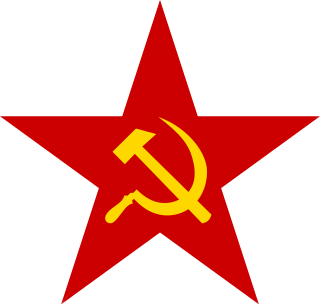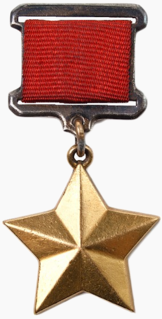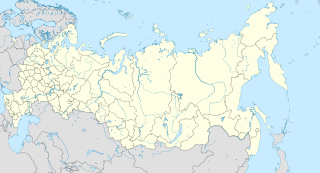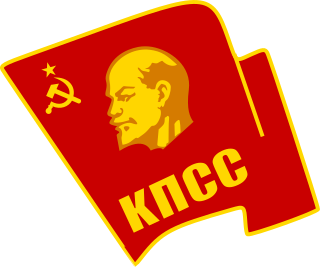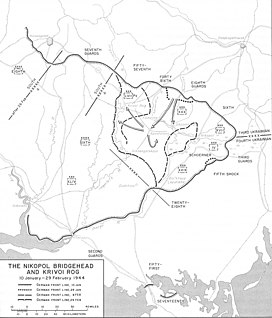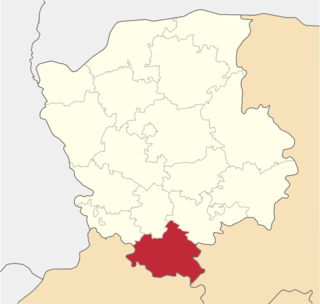Alexander Dmitrivich Vologin was a Soviet soldier who was awarded the title of Hero of the Soviet Union posthumously on January 15, 1944, for his actions during Operation Kutuzov and the Battle of the Dnieper. He was killed on October 17, during the Battle of the Dnieper in modern-day Belarus.

Alexey Ivanovich Polosin was a Red Army sergeant, who was posthumously a Hero of the Soviet Union. He was posthumously awarded the title for his actions in the Battle of the Dnieper. Polosin was reported to have killed three German officers during a reconnaissance mission and 26 soldiers while repulsing a German counterattack.
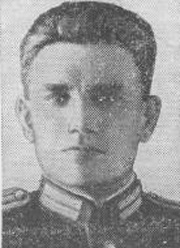
Nikolai Nikolayevich Onoprienko was a Red Army colonel and World War II Hero of the Soviet Union. Onoprienko fought in the Battle of Smolensk, the Battle of Moscow, the Battle of Kursk, Operation Kutuzov, Operation Bagration, the East Prussian Offensive and the Berlin Offensive.

Alexey Vladimirovich Nemkov was a Red Army Captain during World War II and a Hero of the Soviet Union. Nemkov was awarded the title Hero of the Soviet Union and the Order of Lenin for his actions during the Berlin Offensive.

Alexander Petrovich Nikolayev was a Red Army senior lieutenant and Hero of the Soviet Union. He received the title Hero of the Soviet Union and the Order of Lenin for his actions during the Battle of Berlin. Nikolayev also fought in the Siege of Leningrad.

Dmitry Platonovich Onuprienko was a Soviet Army lieutenant general and Hero of the Soviet Union. Onuprienko fought during World War II at the Battle of Moscow, the Battle of Kursk and the Battle of Berlin. He commanded several corps after the war.
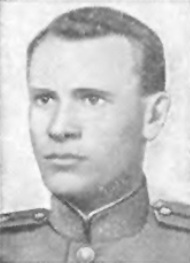
Mikhail Nikiforovich Linnik was a Soviet Army captain and Hero of the Soviet Union. Linnik was awarded the title Hero of the Soviet Union and the Order of Lenin for his actions during the Lublin–Brest Offensive in September 1944.
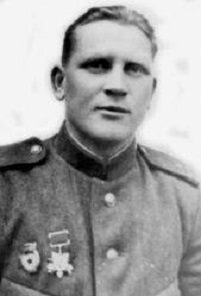
Dmitry Sergeyevich Gusev was a Red Army senior lieutenant and Hero of the Soviet Union. Gusev was awarded the title Hero of the Soviet Union and the Order of Lenin for his actions during the Lublin–Brest Offensive. At the time of the action, he was a platoon commander in the 134th Rifle Division.

Sergey Andreyevich Mostovoy was a Red Army man and Hero of the Soviet Union. Mostovoy was awarded the title Hero of the Soviet Union and the Order of Lenin for his actions during the Vistula–Oder Offensive.
Viktor Andreyevich Turbin was a Red Army Junior Lieutenant and posthumous Hero of the Soviet Union. Turbin was posthumously awarded the title Hero of the Soviet Union and the Order of Lenin for his actions while leading a platoon during Operation Bagration in summer 1944. His platoon reportedly held a bridgehead on the Drut River against numerically superior German troops until the crossing of the remainder of Turbin's regiment.

Maxim Vasilyevich Shmatov was a Red Army major and Hero of the Soviet Union. Shmatov was awarded the title Hero of the Soviet Union and the Order of Lenin for leadership of his battalion during the Budapest Offensive.

Mamish Shahbaz oglu Abdullayev was an Azerbaijani Red Army sergeant and a posthumous Hero of the Soviet Union. Abdullayev was posthumously awarded the title on 24 March 1945 for his actions in September 1944 during the capture of the Narew bridgeheads, in which he reportedly killed more than 29 German soldiers. Abdullayev was killed in action four months later.

Mastan Aslan oglu Aliyev was an Azerbaijani Red Army Starshina and a posthumous Hero of the Soviet Union. Aliyev was posthumously awarded the title for reportedly killing dozens of German soldiers during the Berlin Offensive. He was killed in action during the battle for Tegel.
Abbas Shahbaz oglu Guliyev was an Azerbaijani Red Army captain and Hero of the Soviet Union. Guliyev was awarded the title on 21 February 1945 for his leadership of his battery during the Lublin–Brest Offensive. Guliyev's battery reportedly helped repulse counterattacks in the Puławy bridgehead. Postwar, Guliyev was discharged from the army. He was deputy Minister of Education of the Nakhchivan Autonomous Republic and secretary of the Presidium of the Supreme Soviet of the republic.

Mehdi Nadir oglu Guliyev was an Azerbaijani Internal Troops lieutenant colonel and a Hero of the Soviet Union. Guliyev was awarded the title on 17 November 1943 for his actions in the Battle of the Caucasus and the Kerch–Eltigen Operation. During the battle to break through the Blue Line, Guliyev was reported to have repulsed twelve German counterattacks and killed 167 German soldiers with his machine gun. During the Taman Offensive he reportedly destroyed two German machine guns with grenades. In the Kerch–Eltigen Operation, Guliyev reportedly killed about 100 German soldiers with his machine gun. Postwar, Guliyev served in the Internal Troops, reaching the rank of lieutenant colonel.
Mirza Agamurad oglu Jabiyev was a Red Army captain and a Hero of the Soviet Union. Jabiyev was awarded the title on 19 April 1945 for his actions in the Battle of Königsberg during the storming of Fort Five. Jabiyev led his platoon in the storming of the fort and reportedly raised the red flag on the main tower of the fort. Jabiyev left the army in 1946 and became chairman of the village council and a kolkhoz director.
Aghashirin Agamamed oglu Jafarov was an Azerbaijani Red Army Starshina and a Hero of the Soviet Union. He was awarded the title on 1 November 1943 for his actions during the Battle of the Dnieper, where he was reported to have killed up to 300 German soldiers with his machine gun. He was discharged postwar and worked as chairman of a Kolkhoz.

Yusif Madat oglu Sadykhov was an Azerbaijani Red Army Starshina and Hero of the Soviet Union. Sadykhov was a gun commander in an artillery battalion and was awarded the title for his actions during the Vistula–Oder Offensive. In the offensive, he was credited with knocking out several German armored vehicles and suppressing firing positions, enabling the creation of a bridgehead. He was discharged in 1945 and returned to Tovuz, becoming director of an oil depot.

Vladimir Alexeyevich Saprykin (Russian: Влади́мир Алексе́евич Сапры́кин; 24 August 1916 – 24 April 1990) was a Red Army captain and a Hero of the Soviet Union. Saprykin became a Red Army officer and was a regimental assistant chief of staff when he was caught in the Spas-Demensk pocket in October 1941. Saprykin escaped and reached Soviet lines. He was sent to an NKVD filtration camp, where it was decided that Saprykin had committed treason. He was sent to a penal battalion, where he was wounded. Saprykin became a company commander, regimental chief of staff, and battalion commander in the 144th Rifle Division.

Grigory Mikhailovich Levin was a Soviet Army colonel and a Hero of the Soviet Union. Levin served as a Red Army officer in the late 1920s and fought in the Sino-Soviet conflict of 1929. He was demobilized in 1932 and worked as a statistician. Levin was called up again after the German invasion of the Soviet Union. He served with the 385th Rifle Division and the 354th Rifle Division, in which he led a regiment. He was seriously wounded in January 1944 and upon recovery became a regimental commander in the 37th Guards Rifle Division. Levin was awarded the title Hero of the Soviet Union for his leadership of the regiment in the Battle of Berlin. Levin retired from the army in 1954 and became chairman of the Altai Krai DOSAAF.
